Are you sitting comfortably? (as that nice Daphne Oxenford used to ask on Listen with Mother on the BBC wireless back around, er, 1950)….then I’ll begin.
Back when I were a lad, and God wore short trousers — well, perhaps a bit later, around 1982 — I was [Ed: were?] writing for Practical Photography magazine (I was the technical editor) but was about to move down from Peterboro-ughhh to London, to join our publisher’s nascent cluster of computer magazines.
How to become a pro
Half-dozing one night, around 2 am, I had the radio on. It was an all-night weekend filler programme: Liz Allen fronting You and the Night and the Music, easy-listening music and chatter.
Liz was replying to a postcard sent in a week or so before when there’d been a photographer on the programme, and whoever had written was asking “how can I become a professional photographer?” Liz gave out some elementary advice, but she wasn’t really sure.
Half snoozing and half-listening on a little portable radio/TV/cassette recorder (remember those?) I pressed ‘Record’ and sleepily mumbled something about following around your local newspaper’s regular photographer to get experience, and then maybe even get a job on the paper as a part-time Saturday snapper (as did my friend Paul Massey).
I posted off the cassette and forgot all about it. For a time.
Really derring-do
A fortnight later, Liz wrote, or rang, and asked if I’d like to go in and record a piece about photography. Or, she said, if I was “really daring, come in and do it live”. As I was just about to move back to London, I said I’d do it live the following weekend.
The next week I presented myself at BH (Broadcasting House), in CON(tinuity suite)-H, and we chatted for about twenty minutes between slices of music. Then, at the end of the conversation, Liz said: “See you next week?” And so began a year and a half’s Saturday and Sunday night jabbering on Radio Two about photography.
After a couple of weeks, I thought people would get tired of listening to me and my radio voice, so I took my (up-market-ish) Sony heavy-duty cassette machine, to go out n’ about with two different microphones — a ‘wide-angle’, omnidirectional stereo mic, which could record from all around me, and a narrow-angle ‘gun’ or ‘rifle’ mic, which would record only what was in the far distance ahead.
I thought that these two would give the audio equivalent of a wide-angle and a telephoto lens so that listeners could get more of an idea of what those lenses did.
I stood outside the café at the National Film Theatre, in London beside the Thames, recording passers-by with my wide-angle ‘Altai 704’ mic, and then — with the ‘telephoto’ mic, from the same spot — recorded what was happening way over the Thames at the opposite end of Waterloo Bridge.
Star Street
Then I went to Star Street, just off the Edgware Road — which was still, in ’82, London’s electronic-scraps Mecca — and bought an old Brenell reel-to-reel tape machine for about £15. Wow, yikes, I’ve just seen one on eBay at £199. I copied my little stereo one-and-seven-eighths-inches-per-second cassette onto a 4x faster 7½-inch-per-second ‘professional standard’ half-track stereo tape, mainly so that it was easy to edit (actually with great accuracy, with seven-and-a-half inches of tape for each second of sound) and partly so that when I took in my tape I’d look like a seasoned pro, and not a second-rate amateur.
Incidentally, I’d worked on the radio before, from when I was twelve and on Children’s Hour, so I knew a bit about mics, tape-editing, tape speeds, quarter-track vs. half-track and so on.
I cut up the recorded tape, with red and green leader between each segment, so that Malcolm (Liz’s charming knob-twiddling studio manager husband) would know when it was going to run out and was time to switch back to music or live speech. I couldn’t be bothered typing a proper transcript of all the words on the tape — officially needed in triplicate — so I just jotted down the “intros” and the “outros” on slips of paper for Liz and Malcolm.)
This would be more interesting, I was sure, for listeners. So the next week I went off to find some real proper photographers to interview, so they could give their listener-friendly ‘Stories and Advice’.
Doorstepping
I doorstepped David Bailey (and then-wife Marie Helvin), popped round to see Patrick Lichfield, and decided to intersperse, on alternate weeks between all the well-known names — photographers whom I reckoned no-one had ever heard of, but who had interesting tales to tell.
Paul Massey — who was by now tailing Lady Di around town — and Frances Dumbleton, a Cambridge photographer who specialised in shooting babies (figuratively), and Margaret Lavender, who was a royal-loving amateur photographer who every year won the Martini Royal Photography Prize for taking heart-warming snaps of the Queen, Charles, Philip and Margaret.
I went to see Bert Hardy, at the National Museum of Photography, Film and Television up in Bradford — now the National Media Museum — and locked myself out of my car, and had to get a policeman to (cunningly, but I’m not allowed to say how) get me back into it, to rush back to London in time to play my — quickly transcribed and edited — spool of tape.
Click images to expand
Above right: You’re never alone with a Strand: photo courtesy of Campaign magazine’s online ‘The History of Advertising – 18: Strand cigarettes’. Copyright of this online image: Haymarket Media Group, used here editorially without commercial intent.
Topless but cheerful
I went to see Jon Gray, ‘glamour’ photographer, to talk about his job —with his cheerful topless model chattering beside us — telling us how delightful it was to work with Jon. A then, the next week, I went down the road from Jon to see …what was her name?… who specialised in shooting pets and animals, mainly for pet-food-tin labels. (You need an assistant beside you, or on the floor between your legs, to tempt your waiting pet with morsels, then shoot the dog — if that’s what it is — as it runs towards its food)
I went to see every known photographer you can think of —with the exception of Snowdon, who said he was “too busy” in a very polite handwritten note — and many whom you’d never think of, and spent an hour or two each week editing, trimming, splicing and typing. I cut myself out of each interview so that all that anyone heard was that week’s photographer talking about exactly what they did and how they did it.
One night, ever so tired, I woke up under the desk hearing Liz say “I’m sure he’ll be here any minute; he’s usually right on time” so I dashed to the car with my tape and with London’s first mobile phone — a two-pack-of-cards-sized ‘Technophone’ — to burble “On my way!”
Patrick (Lichfield) had ended his interview with “and if anyone wants to have their picture taken, call my secretary on 01…” ..or whatever it was, and I said that I’d have to cut that out, as there’s no advertising on the BBC.
I’d asked Margaret Lavender, at the end of our chat, how she knew where the Queen was going to be (polo at Windsor, a horse show somewhere else) and she said that she just rang the Buckingham Palace press office. But then Margaret asked could I please cut that out, as she thought it might be a security risk if listeners knew how to find out where the Queen was going to be on any given day.
Very reluctantly, I chopped it (even though the number’s in the phone book) and so we broadcast the tape without that little helpful tid-bit. But, as the next slice of music started, the big ‘phone’ light started flashing (can’t have a noisy phone bell in a radio studio) and it was Buckingham Palace ringing us to say “and if anyone wants to know where the Queen’s going to be, just ring this number” Them were’t days [Ed: was’t days?]
I went out with Mr Papparazzo, Richard Young, cornering him on Brewer Street, opposite where Lady Di was turning on the Regent Street Christmas lights from Aquascutum’s balcony. Of all the photographers I talked with, he was the only one to use a pair of Leicas; small, swift, silent.
Big, black, glass
While Patrick had a crazy little darkroom under the stairs, with medicine bottles of developer and fixer stoppered with old stained corks, Richard used the darkroom at the big black glass Daily Express building on Fleet Street, where I met John Downing, then the Express’s chief photographer, and we went round to his house for a bottle of Amaretto and a chat in the garden (That was the nicest of tapes; full of cheerful stereo birdsong!)
I thought I’d still got the Brenell — maybe I put it on eBay! — and a few old tapes but I found last year that one of the broadcasts has been archived online — can’t remember where — by some radio fanatic….er, sorry, I mean ’serious broadcast enthusiast’.
Bailey’s now creaking along in his eighties, Patrick died, and so did Bert Hardy, and Richard Young — oh, he’s my age says Wikipedia — now runs a photo gallery in London. And, look, Frances Dumbleton lists “Professional Photographer Retired” on her “Presenter – Model – Entertainer – Extra” Castingnow profile. And the Queen’s outlasted them all at Buck House when she’s not out and about, still presenting trophies at Guards Polo, Windsor.


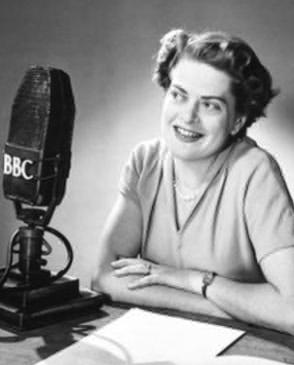
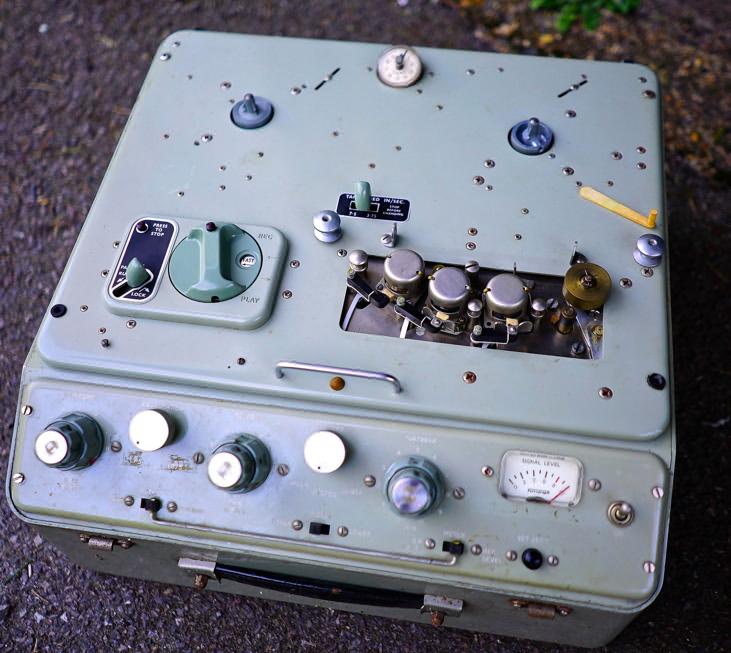
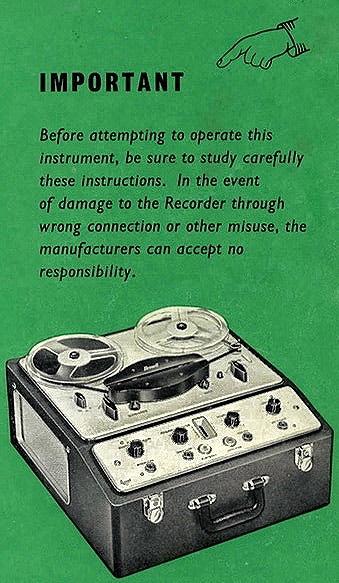
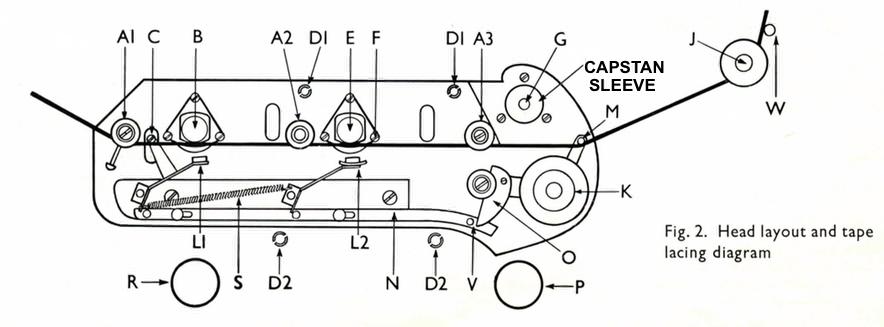
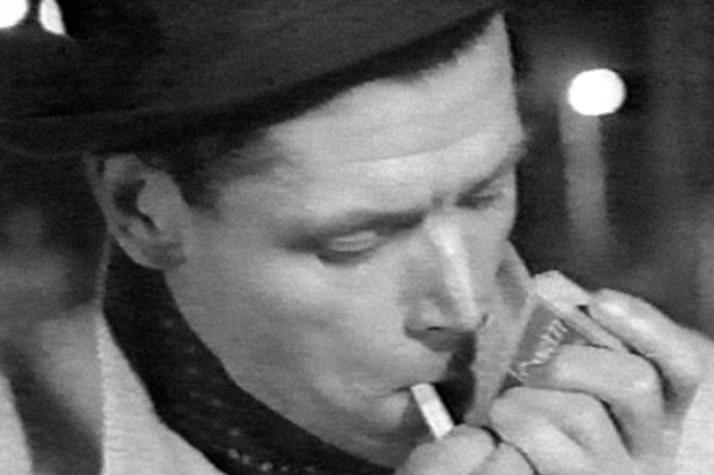

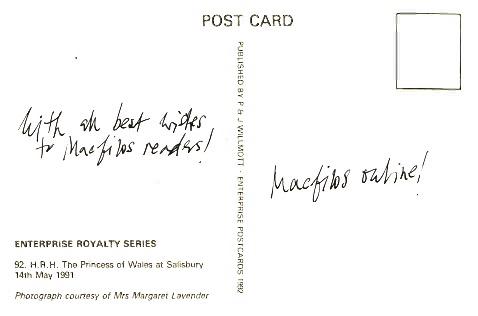
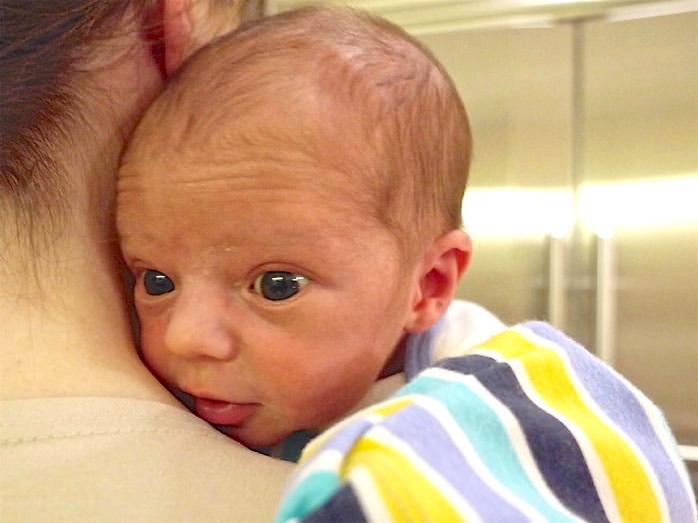
Wagon Wheels and Dandelion & Burdock – now you’re talking! ..And “..a Corona bottle with the wire flip top..” ..is that where this daft virus came from?
I-Spy and Ladybird books ..and Mackeson, Cydrax (..a kind of non-alcoholic cider..) and “Have a Wisdom, Norman Capstan” on the posters, along with a man with a girder on his shoulder – and, inexplicably, a toucan – advertising “My Goodness, My Guinness!”. Kia-Ora (..which, later, in cinemas, was “too orangey for crows”). And the Hillman Minx: Mr Williams, the taxi driver at Deganwy, North Wales, drove a Hillman Minx!
“Three lane main roads..” that was the East Lancs Road – which Mike would have known: one lane each side for getting somewhere, and one in the middle for killing yourself on!
“..the Emperor Ming in Flash Gordon..” ..and Rupert Bear and his pal Algy ..and he had a friend called Ming! (Didn’t he become a photographer, though, and work for Hasselblad?)
And for those who had television; Mr Turnip, Muffin the Mule, Prudence Kitten, Billy Bean and his Funny Machine, Mexican Pete, and – of course – The Flowerpot Men. Television: that were a wooden or bakelite box in the corner of the room, with a 9-inch screen on the front, and you had to draw the curtains to see a ghostly black-&-white picture rolling up and down and tearing sideways, till you adjusted the vertical and the horizontal hold around the back. And you’d sit mesmerised, watching trumpeters, and a chorus shouting “Vivat!”, as a pale and indistinct girl sitting on a throne had a crown lowered onto her head by a ghostly and wobbly Archbishop of Canterbury, while you were guzzling Smiths Crisps ..and Dandelion and Burdock.
(I daresay all this sounds like rubbish and drivel to those in faraway countries – to whom Victor Silvester and his orchestra broadcast dance music ..people in Venezuela and Bechuanaland, and other nations from my stamp album – but to those of us growing up in Britain in the early fifties (and born in the late forties) this was the life we were living! [..Pass me another hanky, Nurse ..and then you must go down with Christopher Robin..]
A great reminder of times past and the lovely Daphne Oxenford, well she had a lovely voice I remember. you will Im sure also remember other programmes on the wireless:
Two Way Family Favourites with Jean Metcalfe and Cliff Mitchelmore
Have a Go with Wilfred Pickles with Mabel at the table and Harry Hudson at the piano.
Bill Cotton’s Band Show “Wakey Wak a a a key!”
Ray’s a Laugh with Ted Ray, Patricia Hayes and Kenneth Connor
Cheerful Charlie Chester – “A proper Charlie,”
Dick Barton Special Agent with Jack Anderson and Snowy White and the wonderful Devils Gallop intro music.
Life With the Lyons with Ben Lyon and Bebe Daniels
The Al Read Show and his catchphrase “Right Monkey!”
The Goon Show with Spike Milligan, Harry Seacombe and Peter Sellers
Workers Playtime with every star who ever was appearing
Journey Into Space with Andrew Faulds, Alfie Bass, Guy Poynter and Don Sharp
Housewives Choice presented by Godfrey Winn, Edmundo Ros, Gilbert Harding, Richard Murdoch, Sam Costa and Eamonn Andrews plus others!
Happy days! More innocent days and lots of fun…….
Thank you David for reminding me of them!
Ah, I remember also, David. Was it Dick Barton who was on Radio Luxembourg, fading in and out in defiance of the BBC’s monopoly?
I sat on my grandmother’s knee to listen to the first episode of The Archers. Peggy Archer, who was the young flipperty gibbet scion of the family, is still in the series and she’s now 100 years old. I think it is the world’s oldest soap, either on radio or television. I now listen to The Archers on a podcast.
“fading in and out” on cats-whisker wirelesses which were cutting edge if my memory serves!
We used to listen to The Archers avidly, particularly when a relation, Joan Bailey, was in it. She was in repertory acting and was called to do Archer work for a number of minor roles.
I must attempt to return to life in 2020 at some stage or should I stay down memory lane?
Oh, David ..you’ve got me weeping into my PG Tips (..cup of tea [no, actually it’s Lady Grey, but PG Tips – and those chimpanzees – seems more evocative!] ..eeee-ee I’m whizzing back in time to the 1950s..)
I have a CD here with the signature tunes of all those old radio programmes (..I brought it from a National Trust house up the Truro River down in Cornwall when we visited a few years ago). If I could play it for you down the internet I’d do it!
Al Read – who was in charge of his father’s Obax Pork Sausages company – really wanted to be a comedian (..like Kenneth Horne..) and he lived round the corner, next to my Auntie Ethel’s house on Circular Road, Prestwich ..must have been number 14, I think. (It was in Auntie Ethel’s wash-house – where she did the washing and had the electric wringer – that my cousin ..her son.. Merton showed me how to develop and print pictures in, er, 1954.)
Mike – no, Dick Barton was on the BBC (..it was a thriller serial, like Francis Durbridge’s ‘Paul Temple’ series..) ..the fading in and out on “208 Radio Luxembuuuuurg!” was a whole load of ‘pirate’ disc jockeys ..but who were they? ..I think Sharon Osbourne’s father did a stint ..it was founded by Leonard Pluge, who wanted to sell radio advertising, but couldn’t on UK radio ..the whole history is in a wonderful book – available on Amazon – called “Last Train To Hilversum” ..my current bedtime reading!
My copy of Robert Opies “The 1950’s Scrapbook” on page 15 shows that Brooke Bond had (at least?) three grades of tea: Dividend, Choicest and presumably top of the range P G Tips. The other big tea brands were Lyons, Ty-Phoo and Barbers.
The CD with all those signature tunes sounds great. One of my favourite musicians is the great Carroll Gibbons, an amazing pianist, composer and band leader who led the Savoy Orpheans during the late 1920’s to the early 1950’s. If you don’t know him there’s a lot of his work on the internet.
Very interesting you lived round the corner from Al Read, a wonderful comedian and sausage maker too as you say! I loved his shows.
At risk of opening up another diversion, did you read The Eagle with Dan Dare, pilot of the future? Launched April 1950.
Never heard of Barbers tea, but “..did you read The Eagle with Dan Dare, pilot of the future?” ..sure, he came round every week, and always read the Eagle over my shoulder – really annoying!
(Our friends’ daughter Ilka used to be called “The Mekon” by her ..what would you call him?.. pernicious step-dad?) ..And there was the Beano (..I didn’t read the Hotspur ..too ‘active’ for me!) ..and the Dandy, with Desperate Dan (..not to be confused with Dan Dare!..) and his cow pies ..and there was Dennis the Menace, and Beryl the Peril, and some little circular girl whose name I can’t remember. Plus the Bash Street Kids, and – of course – Lord Snooty & His Pals!
But – can you tell? – my favourite reading was the Children’s Encyclopaedia, so I know that the human eye can see a candle at two miles, and that we should discourage the sale of piano keys and celluloid collars, as they are both terribly “inflammable”, as it used to be called.
I’d better stop now, or I’ll be reminiscing about those wonderful STC BBC PGS/1 4038 oval ribbon microphones ..sob, sob – where did mine go?
The Frieze family moved into Al Read’s house, and I (inadvertently) knocked out Ruth Frieze’s two front teeth when I was in my second year of primary school! (But Mrs Minton didn’t tell me off ..inexplicably!)
But enough about me ..tell us more about the 1950s.. Please!
Been there, read that. Dandy and Beano were my staples, and I loved the Eagle. Dan Dare and all that the Mekon – didn’t he float on a carpet or something. Or was that the Emperor Ming in Flash Gordon. Every Saturday we paid sixpence to sit in the Savoy cinema and watch Mickey Mouse and Popeye followed by the excitement of Flash Gordon.
Wagon Wheels washed down with Dandelion & Burdock, swigged from a Corona bottle with the wire flip top.
Playing Kick the Can. Hope you played this but I remember the rules if you are still interested!
I-Spy books on everything, well cars, train journeys, Zoo Animals etc.
Kia-Ora Suncrush Orange drink
Fry’s chocolate bars in a wrapping with five pictures of a small boy on depicting “The five stages of Satisfaction”.
The Hillman Minx, the Jowett Javelin, the Austin Atlantic and of course The Morris Minor (my Great Aunt had one and used to take me for rides)
AA motor cyclists who took one hand off the handlebars whilst driving to salute you when they spotted the AA badge on the front of your car.
Three lane main roads where the middle ‘death” lane was used hopefully when vacant by traffic going in opposite directions.
I could go on but you already know that!
Wow, I inherited a Ferrograph (a different model though) from my maternal uncle. I remember it was a monster to lift (it lay on the floor of my room). It came with a shiny steel mic and a bunch of BASF reel tapes that I recorded over with my rock music collection. I think it was pretty loud.
Thank you for this trip back.
You’re welcome.
I think tape enthusiasts longed to own a big, chunky, heavyweight Ferrograph in the same way that camera enthusiasts longed to own a big, chunky, heavyweight Hasselblad. (There were far more nimble tape recorders, and cameras, on the market, though.)
Your maternal uncle must have had muscles like Charles Atlas!
My first tape recorder was a huge deck thing with the Baird brand (John Logie as was). I rented it in 1962 or thereabouts for, I think, 2/6 a week from Radio Rentals opposite the old department store (Dickens and Jones?) in Richmond, Surrey. I lived in St. Margarets at the time. With its plastic, table-top mic and slow speed, this was the antithesis of the Ferrograph you mention.
It was supposed to be portable (I know this because it had a handle), but it weighed more than most modern televisions. At Christmas time I lugged it all the way to Lancashire to plague friends and family with surreptitious recordings. None of them had seen a tape recorder before and they certainly hadn’t heard their own voices. Huge fun.
The lasting impact of this visit was that I took the Baird on visits to old relations who were then in their eighties, having been born in the 1880s. They told stories and chatted in their authentic Lancashire dialects. It wasn’t just the accent, which still lingers in a watered-down fashion, but the unique dialect words that have almost gone out of use. Words such as “faer” which means ugly. I have no idea how to spell it since none of this was ever written down: Her were reet faer, meaning she was very ugly. Very common was the use of “fer’t” or “for to”: “Ahm gooin’t Cworp fer’t fetch a pint o milk”. [Cworp being Co-op, the Co-operative store].
My old friend Frank, who lives in Wigan, will no doubt put me right on the spellings above. He reads Macfilos and says (rightly) that the comments are often more interesting than the articles. But then the people in my recordings lived a whole six miles away from Frank’s home and, believe it or not, the accent shift was very noticeable. What were said in Wigan weren’t always what were said six miles away in Atherton where I were brought up. They were then different worlds, connected by a trolley bus.
The reel tapes of these stories languished in a cupboard for decades. Then I copied them to cassettes when they become popular. Now they are digitised and, occasionally, I listen to these voices from 140 years ago with wonder. They never made it to the BBC but I suspect someone would like to archive them.
Would you like to offer them to the National Sound Archive? (..Now a branch of the British Library, on Euston Road.)
That’s a possibility and I’ll give it some thought. I’d need to edit them though.
Thank for all the fascinating background which brings back a lot of memories. Since Mike mentioned me in dispatches, here’s my two penn’orth.
Mike mentioned the Lancashire dialect word “faer” meaning ugly. I think it is spelt “fey” and It did imply someone, usually female, was pretty ugly. Fawce was cunning and sly.
Like the two David’s I was an avid reader of comics in my childhood in the late forties and early fifties. Dandy and Beano on Tuesdays and Thursdays, as were Wizard and Hotspur.
Eagle was Wednesday. Incidentally, Dan Dare’s Batman was Digby from Wigan and he actually used an occasional Lancashire idiom in his speech. Did you know that the Eagle was written and edited in Southport?
The Mekon levitated on a small green boat-shaped device and was the commander of the Treens, a band of fearless warriors who appeared to have little “nous “. They wore a Roman Legionnaire type armour.
The reference to radio programs was also memory jogging. Dick Barton was BBC, I don’t know if it was the Light program or the Home service. Dan Dare was on Radio Luxembourg. The Archers took the same time slot as Dick Barton — 7 to 7.15 weekdays, omnibus on Sunday morning.
I used to listen to Mrs Dales Diary from 4.15 to 4.30 weekdays my mother after arriving home from St Andrews.
Your tape recorder memories would include Frank, my dad, reading a dialect poem from the Wigan Observer. You came for tea and brought that heavy machine.
Hope you find this interesting.
Well ..weird! It was another Frank – Frank Hampson – who drew Dan Dare “Pilot of the Future” ..but I’d no idea that he/it came from Southport (..where you could walk two miles out to sea when the tide was out).
If we were lucky (..we didn’t have a car..) Uncle Eddie and Auntie Sophie would drive us out to Southport for dainty afternoon tea. The sand dunes went on for miles ..and so did the very shallowly-sloping beach!
Dick Barton was on the Light Programme (fore-runner of Radio Two) at 6:15pm ..here’s a copy of the Radio Times of the 1st January 1951: https://tinyurl.com/ug77kth ..that Genome Project (archiving old editions of the Radio Times) is wonderful!
I used to help my mum with the ironing during Mrs Dale’s Diary ..when I was old enough to go to school. BEFORE I was old enough to go to school, I’d listen to it in the mornings (10:15 to 10:30, I think) and then listen to the afternoon repeat! ..And in between there’d be Music While You Work, Workers’ Playtime, Concert Hour, Listen With Mother (see above!) and Woman’s Hour ..and so on until Children’s Hour at five o’clock!
My mum and her sisters came from Bolton, but the only Lancashire dialect we heard was my Auntie Ethel saying “There’s nowt so queer as fork” (..folk).
Thanks David for this evocative wander down memory lane. I also locked myself out of my car in the days when the doors had pull up knobs with a small ball of plastic at the top. Standard (if not strictly issue) police equipment, held inside the helmet, was a piece of that nylon fabric that was/is used to secure packing cases. Slipped between the glass and the frame, dropped over the door lock knob, a sharp tug and in I went to a mumbled “you didn’t see that did you”. Cars nowadays don’t have that knob – I cannot think why. Apologies for lowering the tone.
Doh! ..you’ve given it away (..and I promised the policeman that I’d never tell ..but I haven’t: ..you did!) ..although I can’t remember how many – purported – ‘owners’ I let into (their?) cars when – in a previous existence – I was an AA (Automobile Association) breakdown mechanic. (No; I’ve never been a brain surgeon; that’s still to come.)
(After the AA, I was, for a week, assistant PR for the London International Electronic Components Show ..and then started selling cameras in camera shops: Kingston-on-Thames, Surbiton, Trafalgar Square, Oxford Street.)
Thanks for an interesting read David.
Questions : In your lifetime pursuits in photography and images how many cameras have you owned? How many of them do you still have? Is or was there a favourite? We can leave lots of other tech questions for another day.
“How many cameras..?” ..Dozens; scores ..maybe not quite hundreds.
“How many … do you still have?” ..er, dozens; scores..
“Is or was there a favourite?” ..In the 35mm SLR years, the Olympus OM-2. Smaller and lighter than the bombproof Nikons, with a superb viewfinder, a huge assortment of excellent, generally small and lightweight, lenses (many with the same 49mm filter thread).
Prior to SLRs, the little folding Kodak Autographic. The curved Bakelite Brownie 127. Although Barnack-style Leicas were small, handy and precise, I think the Contax II (..like Bert’s holding, in that picture above..) and Contax III were better cameras: easier film-loading; simpler bayonet lens changing; bigger wind and rewind knobs; far better all-in-one viewfinder (instead of the Leicas’ two separate windows). But the 1954 M3 changed all that ..but then Leicas were overtaken by the terrific Japanese SLRs, which could shoot anything with any lens.
In these digital times? ..Olympus E-M1 and the compact m4/3 lenses; Sony A7S (shoot anywhere, in any light); Canon R (silent autofocus SLR); Sony pocket RX100 series.
I enjoyed this immensely David, a break from the norm and nostalgic trip into a much different time.
Clearly with your cinema antics, you have had a very colourful and varied journey. I bet there are a few more gems of stories to share with us all in there.
Thank you for this one.
Dave
Oh, I’ve done a good few different things ..but it was only when a friend called Debbie lent me her Spotmatic (..when would that have been? ..around 1974?..) that I got back into photography, after having pretty much forgotten it since about ’59.
About ’76 I started teaching it, and in ’79 I was paid, full time, for writing about it! ..testing cameras, lenses, describing how flashguns work, and lens coatings, and a myriad other things..
The Spotmatic was around in the mid-1960s when I bought my M3.
Mmm ..the Spotmatics were built to last – as, of course, were those M3s. I inherited my M3 from my father-in-law – and sent it off to be serviced – and it now works as smoothly and quietly as the day it was built in ’54 (..number 706676 ..so you can tell he was an ‘early adopter’!)
Not sure where to go with this one, David, after the above discourse on domestic economics. I think the world was a more pleasant place in the times you defined. Skies were unpolluted. Quite an event to an aircraft before package holidays were invented. Roads and towns were unpolluted, bar coal fires in winter in cities, SMOG; yes I do remember London smog, but generally our simple lives were generally healthy, Amateur photography was still quite expensive with used cameras exceeding new ones for several years,
One aspect of life then is very much alive today. Radio. I still enjoy radio and the pleasant challenge of building in your mind your own set of imaginary pictures to go with the spoken words.
Thank you for your trip down memory lane.
But my father always used to say “They weren’t the ‘good old days'” ..women couldn’t get a house or a mortgage without their husband’s consent; women were consistently paid less than men; women were told to shut up and behave themselves; children were sent up chimneys ..no, maybe that was a bit earlier.. or they were turned into Water Babies; miners had short lives, stuck down coal mines and breathing in coal dust; “..Amateur photography was still quite expensive..” ..yes, and you only got twelve on a roll of 127 film, but you could develop it yourself (if it was black-&-white) and watch the pictures magically appear on the paper in the developing tray!
“Memory Lane”; isn’t that just round the corner from Strawberry Fields?
A wonderful read. thanks for sharing David
My pleasure, Jean. It’s nice to know the background to photos and why and how they’re made, I think!
Brilliant! Brings back some memories of living and working in London up on Charlotte St., so Star St. was not far away for a bit of gloating and envying. The ability to connect with VIP’s back then is clearly so different from today when you have to go through various P/R handlers and Social Media experts to get to talk to anyone regardless of their status. I think it also speaks to “pluck” and the belief that people will talk to you if you ask nicely.
I did a not unreasonable impression of “pluck” when I lived in Plymouth before moving to London where I persuaded bands and managers that I was the local Melody Maker reporter for concerts and interviewing band members about their tour experiences. It lasted for a while until one concert where two Melody Maker reports happened to turn up…
Thanks again for a great article!
“..I persuaded bands and managers that I was the local Melody Maker reporter..”
Cheeky! ..But as Jimmy Savile said to my mum when I asked to borrow his car (a Rolls-Royce) for a little 8mm film I was making, “Nothing ventured, nothing gained!”
But, as I mentioned (above) to Jason, all the people I spoke with with really happy to talk about what they did, and how and why they did it!
Glad you enjoyed it!
Them were t’days. A cheque. And £30. When I were a young journalist our magazine paid two guineas (£2.10) for every photograph published. Of course, you could buy a house for that back then.
..and a funny thing happened on my way back from the National Museum of Photography, Film and Television a few years after that chat with Bert Hardy: I’d taken a friend there, and one of us (she?) suggested to going to that famous fish & chip shop ..what were it called? ..I can see it in my mind’s eye: ah! Harry Ramsden’s!.. but there was quite a queue outside, and waitresses were asking who in the queue would be OK to sit together when a table became free ..so we were asked if we’d sit with another couple: he was a strong-looking heavy-set man, and she had a very long neck, almost giraffe-like.
I looked at her, and couldn’t think why she seemed vaguely familiar ..anyway, we all sat down, and the man asked where we’d come from, and I said Bury, which was where we’d driven from, “..but originally from Prestwich”. “Oh, whereabouts in Prestwich, because we lived there..” “..Woodland Crescent, originally..” “..Oh, we lived in Woodland Crescent, what number?” “..Fourteen”. “Oh, WE lived at number fourteen!” ..and they were the couple my parents had sold our house to when I was nine ..for £700 (..or were it £70..?)
Oh, and (..is there no stopping him?..) Two Guineas was my first cheque from the BBC (for Children’s Hour) when I was twelve. (My father – annoyingly! – gave me the £2-and-a-shilling, but kept the cheque, to pull out of his wallet to show to anyone he met.)
Your dad was a crafty cove — he shortchanged you. Should have been two shillings! I suppose the missing twelve pence represented interest. Incidentally, I remember our first house cost fifteen and six without the gas stove.
Fifteen and six! Daylight robbery! ..Mind you, you were lucky; all we had for my first six years were a shoe-box, and we had to pay three shillings and sixpence a week for that!
Thanks for the write-up, David !
Must have been a fun and fascinating time! Did your interviewee’s usually prove to be open and forthcoming with you, or were some “blood from a stone” types who gave little away?
Jason.
Oh, everyone was really happy to “spill the beans” and answer everything I asked, and LOVED talking about their work ..and giving advice to others ..like Frances giving away the secret of her success: 2pm, after a feed, over the mother’s shoulder. (She had a Hasselblad on a short tripod with a seat in front of it; sat the mother down, waited for the baby to look at the camera, and squeezed the button.)
Patrick talked all about his boyhood, and being shy, and wandering round the estate on his own with his camera, pretending to be ‘Mr Frith’ (Francis Frith, who sold postcards of the seaside and the rest of the British Isles) ..something he could do on his own, as he had no playmates. (..like a less exuberant J.H.Lartigue, huh?)
Everyone was a joy to talk with, and happily did it without asking for any payment (..but the BBC insisted, about nine months later, that I should give a list of everyone I’d spoken with, and so everyone was each sent a cheque for £30).